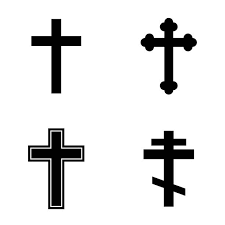
Crossing Paths: Exploring the Intersection of Cultures and Beliefs
The Significance of Cross in Various Contexts
The cross is a symbol that holds deep meaning and significance across different cultures, religions, and contexts. Its universal appeal and diverse interpretations make it a powerful emblem that transcends boundaries.
Religious Symbolism:
In Christianity, the cross represents the crucifixion of Jesus Christ and is a symbol of sacrifice, redemption, and salvation. It is a central icon in Christian faith, reminding believers of the ultimate act of love and forgiveness.
Cultural Representations:
Across various cultures, the cross symbolizes unity, harmony, and balance. In some traditions, it signifies the intersection of the spiritual and physical realms, serving as a point of connection between heaven and earth.
Historical Significance:
The cross has been used throughout history as a marker of boundaries, milestones, or significant events. It has appeared in ancient civilizations as a symbol of power, protection, or guidance.
Modern Interpretations:
In contemporary art and design, the cross is often reimagined and incorporated into various mediums to convey messages of hope, resilience, or rebellion. Its versatility allows for creative expressions that resonate with different audiences.
Conclusion:
Whether viewed through a religious lens or appreciated for its cultural richness, the cross remains a timeless symbol that continues to inspire contemplation and reflection. Its enduring presence serves as a reminder of our shared humanity and interconnectedness across diverse landscapes.
Exploring the Cross: Symbolism, Cultural Significance, and Evolution
- What does the cross symbolize in Christianity?
- How is the cross used in different cultures?
- What historical significance does the cross hold?
- Why is the cross a common motif in art and design?
- Are there variations of the cross symbol across religions?
- What materials are crosses typically made from?
- How has the meaning of the cross evolved over time?
What does the cross symbolize in Christianity?
The cross holds profound symbolism in Christianity, representing the crucifixion of Jesus Christ and serving as a powerful emblem of sacrifice, redemption, and salvation. For Christians, the cross is not merely a religious symbol but a poignant reminder of Christ’s ultimate act of love and forgiveness. It embodies the core beliefs of the Christian faith, emphasizing the transformative power of faith and the promise of eternal life through Christ’s sacrifice on the cross. The cross symbolizes hope, grace, and reconciliation, serving as a central tenet that unites believers in their shared devotion to Christ’s teachings and message of redemption.
How is the cross used in different cultures?
The cross holds diverse meanings and uses across various cultures worldwide. In Christianity, the cross symbolizes the crucifixion of Jesus Christ and represents sacrifice, redemption, and salvation. In some cultures, such as Celtic traditions, the cross is associated with protection and warding off evil spirits. In Hinduism, the swastika symbol, which resembles a cross with arms bent at right angles, holds positive connotations of luck and well-being. Additionally, in ancient Egyptian culture, the ankh cross symbolized life and immortality. The versatility of the cross as a symbol allows it to transcend religious boundaries and hold significance in cultural practices and beliefs around the globe.
What historical significance does the cross hold?
The historical significance of the cross is profound and multifaceted. Across civilizations and time periods, the cross has served as a potent symbol with various meanings. In Christianity, the cross represents the crucifixion of Jesus Christ and stands as a powerful emblem of sacrifice, redemption, and salvation. Beyond its religious connotations, the cross has been utilized in different historical contexts to denote boundaries, mark significant events, or symbolize power and protection. Its enduring presence in human history reflects its universal appeal and ability to transcend cultural boundaries, making it a symbol that continues to evoke contemplation and reverence across diverse societies.
Why is the cross a common motif in art and design?
The cross holds a significant place as a common motif in art and design due to its multifaceted symbolism and universal recognition. Beyond its religious connotations, the cross represents themes of sacrifice, redemption, unity, and balance that resonate with people across different cultures and beliefs. Its simple yet powerful form allows artists and designers to convey complex ideas and emotions with clarity and impact. The cross’s timeless appeal as a symbol of hope, faith, and connection to something greater than oneself makes it a compelling choice for creative expression in various artistic mediums.
Are there variations of the cross symbol across religions?
The question of whether there are variations of the cross symbol across religions is a fascinating one that delves into the rich tapestry of cultural and religious diversity. Indeed, various faith traditions around the world have their own unique interpretations and representations of the cross symbol. For example, the Christian cross with its distinct vertical and horizontal beams is widely recognized, while the Ankh cross in ancient Egyptian religion features a looped top. In Hinduism, the Swastika symbol holds significance as a sacred emblem, often associated with auspiciousness and well-being. These diverse iterations of the cross symbol highlight the multiplicity of meanings attributed to this iconic emblem across different religious beliefs and practices.
What materials are crosses typically made from?
Crosses are typically made from a variety of materials, each carrying its own symbolism and significance. Common materials used in crafting crosses include wood, metal, stone, and even precious metals like gold or silver. Wood is often associated with traditional and rustic designs, symbolizing simplicity and humility. Metal crosses can convey strength and durability, while stone crosses may evoke a sense of permanence and stability. The choice of material for a cross can reflect cultural traditions, personal preferences, or religious beliefs, adding depth to the meaning behind the symbol itself.
How has the meaning of the cross evolved over time?
The meaning of the cross has undergone a significant evolution over time, reflecting the diverse interpretations and cultural shifts that have shaped its symbolism. Initially serving as a symbol of suffering and sacrifice in Christianity, the cross has evolved to represent not only redemption and salvation but also love, forgiveness, and hope. Across different cultures and historical periods, the cross has been imbued with various meanings, including unity, protection, guidance, and spiritual connection. Its evolution reflects the changing attitudes towards faith, spirituality, and human values throughout history, making it a timeless emblem that continues to resonate with individuals on a profound level.


